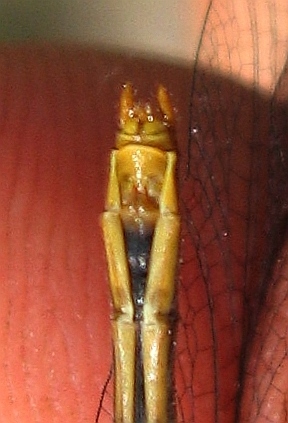Flight season: mid-June to late October.
Population: common, likely to be encountered at any slow water habitat such as
ponds, marshes or the north shore of Stoco Lake.
Often found foraging in fields a good distance from water.
Length: about 30 mm to 35 mm.
Distinguished from other Sympetrum species by its gleaming white face.
|
|
Tweed, Ontario, the Moira River, near the walking bridge and dam:
rock-bottomed river with fast flowing water, rapids and emergent rocks, but also quiet pools and backwaters.
The shoreline vegetation is mostly trees with a few small clearings supporting tall grasses and wildflowers.
|
Male White-faced Meadowhawk (Sympetrum obtrusum)
August 31, 2009
|
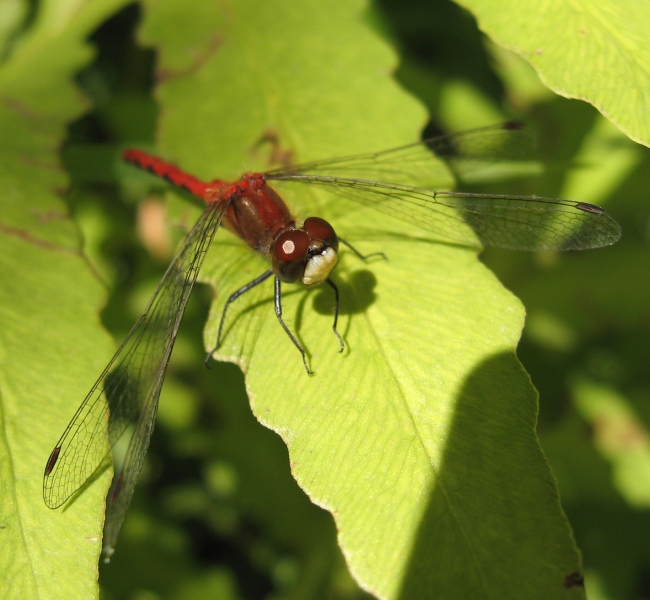
......................................................................
Male White-faced Meadowhawk (Sympetrum obtrusum)
September 08, 2009
|

......................................................................
|
An old female White-faced Meadowhawk (Sympetrum obtrusum) –
the females are orange, turning a grayish tan with increasing age
(September 06, 2009).
|
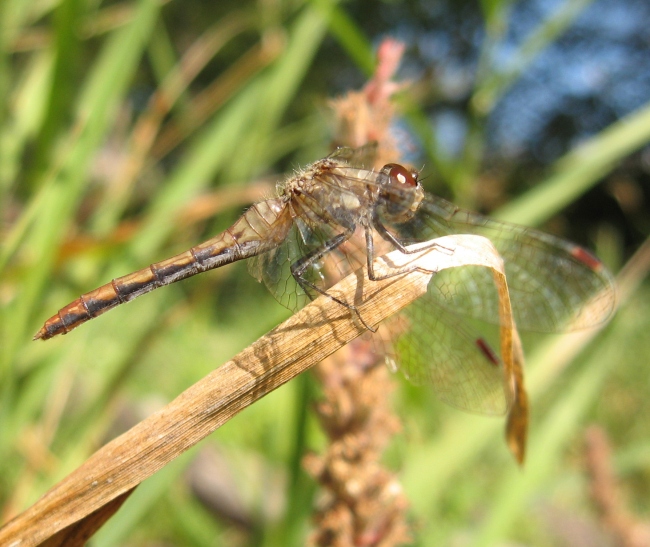
......................................................................
White-faced Meadowhawk (Sympetrum obtrusum), wheel
September 03, 2009
|
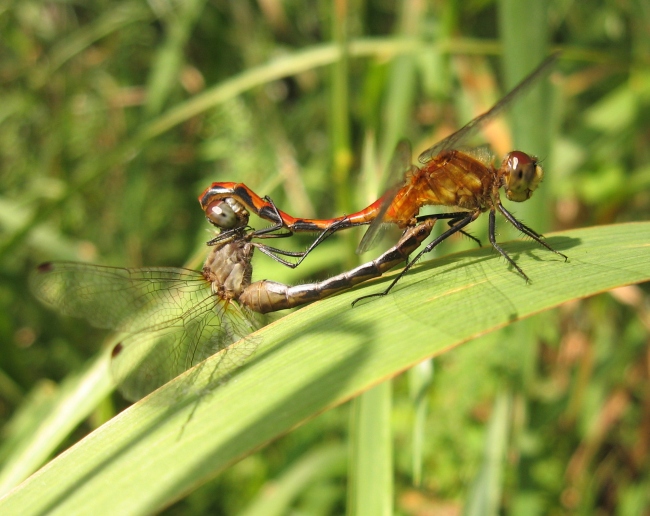
......................................................................
|
White-faced Meadowhawk (Sympetrum obtrusum) –
a closer look at the male's claspers in action
(September 02, 2009).
|
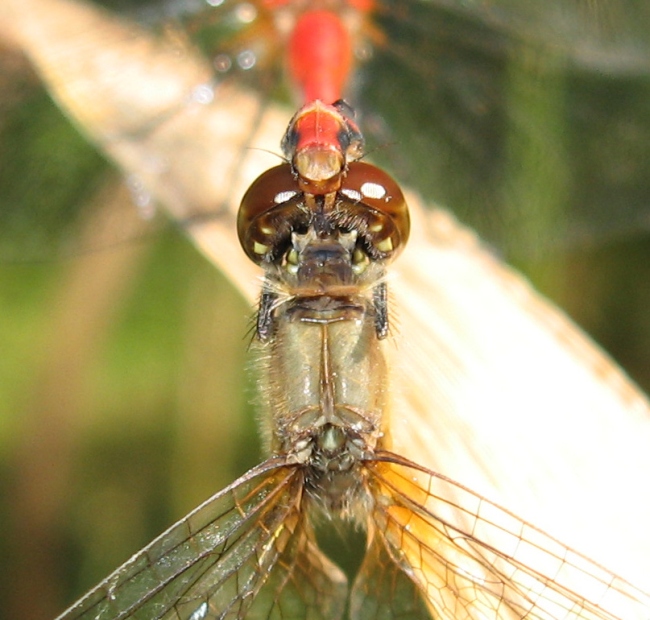
|
East of Tweed, Ontario, near the intersection of Alexander Street and the trans-Canada Trail:
disturbed field supporting tall grasses and wildflowers, bordered by shrubs and trees with a sand and rock-bottomed creek to the east.
|
|
Immature male White-faced Meadowhawk (Sympetrum obtrusum) –
looking very much like a female, this dragonfly will turn red with maturity.
To add to the confusion, female and immature male
Ruby Meadowhawks and
Cherry-faced Meadowhawks also resemble this male,
and it's necessary to study the hamules (males) or subgenital plates (females) to sort out the species
(June 19, 2014).
|
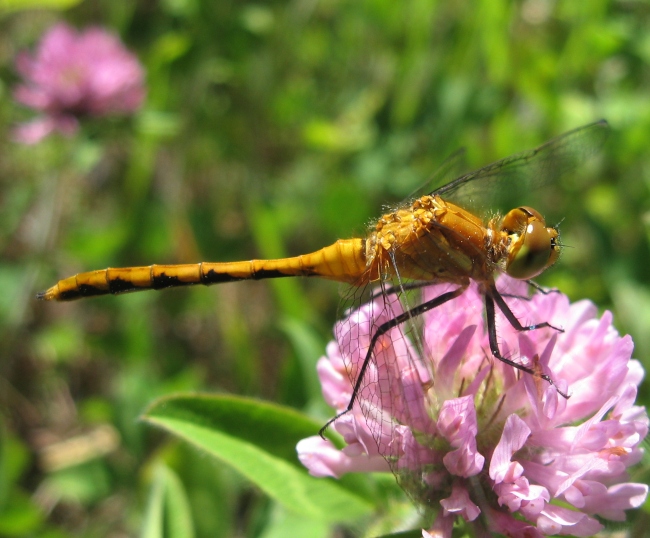
|
East of Tweed, Ontario, near the intersection of Lajoie Rd. and the trans-Canada Trail:
a shady wooded area, with clearings both natural and created by the trail supporting grasses and wildflowers, the lagoon lies nearby to the northwest.
|
|
Female White-faced Meadowhawk (Sympetrum obtrusum), subgenital plates –
the lobes are long, straight, and taper to sharp points at the tips
(July 21, 2014).
|
